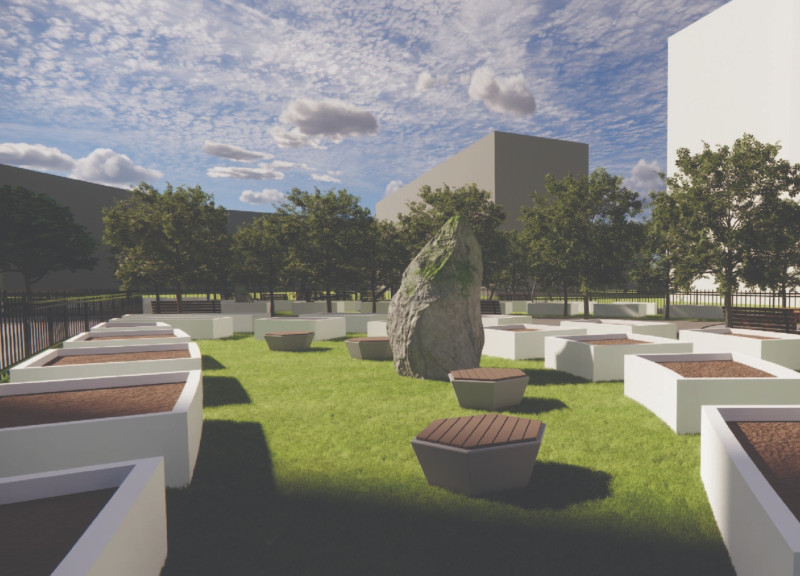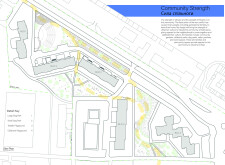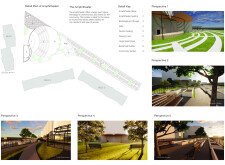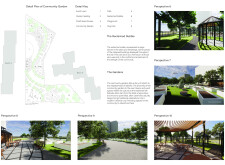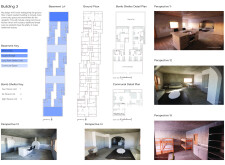5 key facts about this project
## Community Strength Initiative in Saltivka, Kharkiv
Located in the Saltivka neighborhood of Kharkiv, Ukraine, the Community Strength initiative is designed to address the dual challenges of rebuilding physical infrastructure and revitalizing social connections following recent conflict. The project emphasizes multifaceted spaces that promote community interaction and cultural expression, fostering resilience and healing within the local populace. The design incorporates elements that resonate with the traditional practices of the area, creating an environment that supports both communal activities and individual well-being.
### Spatial Strategy and Programmatic Elements
The site plan features a variety of designated areas that support diverse community functions. Central to the layout is an amphitheater that serves as a venue for performances and gatherings, designed to enhance communal cohesion. Surrounding this focal point, community gardens provide opportunities for urban agriculture, reflecting cultural roots and facilitating educational programs. Inclusive recreational spaces, including parks and playgrounds, cater to residents of all ages, promoting active engagement and leisure.
### Materiality and Community Representation
Material selections focus on sustainability and symbolic representation of the local context. Reclaimed rubble from prior structures is utilized, serving both as a memorial and a testament to community resilience. Natural landscaping, including trees and open green spaces, is integrated to create a calming environment while promoting ecological diversity. Durable construction materials are employed to ensure long-term safety and functionality, addressing the practical needs of residents and reinforcing the overall vision of a secure community space.
The layout of Building 3 incorporates essential communal facilities such as kitchens for traditional cooking and secure living areas, addressing residents' needs for shared resources and safety. The design's emphasis on intergenerational learning and emotional well-being through public spaces further underscores its commitment to fostering a cohesive community identity.


